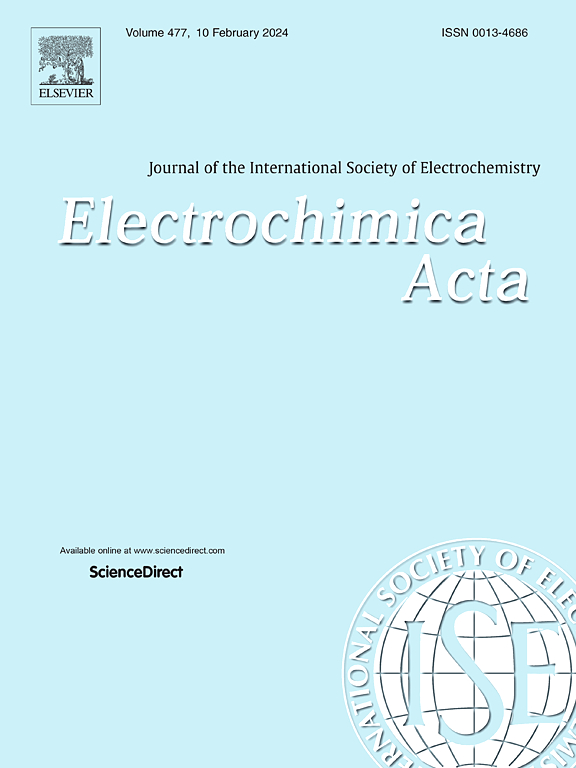Natural convection effects in molten LiF-NaF-KF
IF 5.5
3区 材料科学
Q1 ELECTROCHEMISTRY
引用次数: 0
Abstract
Understanding mass transfer is of great importance to molten salt electrochemistry. However, natural convection has long been neglected in electrochemical measurements in stagnant molten salt systems due to the complex mathematical treatments. Here we reported the notable natural convection effects in molten LiF-NaF-KF during cyclic voltammetry and chronoamperometry tests. The established model showed that the convection-diffusion layer (CDL) convection dominated mass transfer under long time-scale tests in molten LiF-NaF-KF-EuF3. However, in the case of molten LiF-NaF-KF-K2TiF6, CDL convection predominated at dilute redox concentrations while density-driven convection came into dominance at high redox concentrations, because of the severe coordinate structure change of the redox couple. The derived thickness of the convection-diffusion layer, , ranged from 135 to 183 μm, much higher than that in aqueous solutions (220–250 μm). Moreover, the increase in system temperature greatly enhanced natural convection effects in molten fluorides. Lastly, the use of microelectrode (re<39.7 μm for =160 μm) was demonstrated to be an effective way to suppress the intense natural convection effects.
熔融 LiF-NaF-KF 中的自然对流效应
了解传质对于熔盐电化学非常重要。然而,由于复杂的数学处理,自然对流长期以来在停滞熔盐体系的电化学测量中被忽视。在此,我们报告了熔融 LiF-NaF-KF 在循环伏安法和计时器测试中显著的自然对流效应。已建立的模型显示,在熔融 LiF-NaF-KF-EuF3 的长时间尺度测试中,对流扩散层(CDL)对流主导了传质。然而,在熔融 LiF-NaF-KF-K2TiF6 中,由于氧化还原偶的坐标结构发生了严重变化,CDL 对流在稀氧化还原浓度下占主导地位,而密度驱动对流在高氧化还原浓度下占主导地位。得出的对流扩散层厚度δconv.δconv.在 135 至 183 μm 之间,远高于水溶液中的厚度(220-250 μm)。此外,系统温度的升高大大增强了熔融氟化物的自然对流效应。最后,使用微电极(δconv.δconv.=160 μm 时为 39.7 μm)被证明是抑制强烈自然对流效应的有效方法。
本文章由计算机程序翻译,如有差异,请以英文原文为准。
求助全文
约1分钟内获得全文
求助全文
来源期刊

Electrochimica Acta
工程技术-电化学
CiteScore
11.30
自引率
6.10%
发文量
1634
审稿时长
41 days
期刊介绍:
Electrochimica Acta is an international journal. It is intended for the publication of both original work and reviews in the field of electrochemistry. Electrochemistry should be interpreted to mean any of the research fields covered by the Divisions of the International Society of Electrochemistry listed below, as well as emerging scientific domains covered by ISE New Topics Committee.
 求助内容:
求助内容: 应助结果提醒方式:
应助结果提醒方式:


